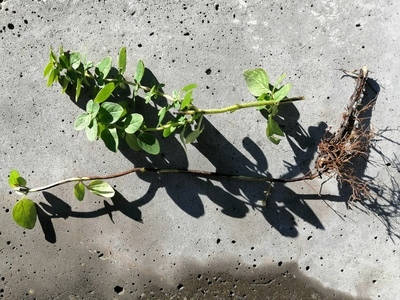Oregano
Botanical name
Origanum vulgare
Details
Hardy and easy to grow, this popular culinary herb is also loved by bees and is a good ground cover in the forest garden. Once you have this plant you can easily multiply by dividing up larger plants.
Diameter
1.00
Forest layer
ground cover
Flowers
purple
Drought tolerance
Edible
Propagation method
Transplant
Price
$3.90
3 rooted cuttings
Only 9 in stock
Add to Order
Related
Autumn plant propagation
Date
April 15, 2017
Details
From Cuttings:
- Blackcurrants (Ribes nigrum) – Hardwood cuttings root easily in moist soil.
- Redcurrants (Ribes rubrum) – Similar to blackcurrants, easy to propagate in autumn.
- Gooseberries (Ribes uva-crispa) – Hardwood cuttings take well in cool conditions.
- Elderberry (Sambucus nigra) – Grows well from hardwood cuttings.
- Blueberries (Vaccinium spp.) – Semi-hardwood cuttings can be taken in late autumn.
- Raspberries (Rubus idaeus) – Can be propagated from root or cane cuttings.
- Figs (Ficus carica) – Hardwood cuttings root well when planted in well-draining soil.
- Mulberries (Morus spp.) – Hardwood cuttings from dormant wood work best.
- Pomegranates (Punica granatum) – Take cuttings from mature wood for best results.
- Olives (Olea europaea) – Semi-hardwood cuttings can root in autumn in mild climates.
- Rosemary (Salvia rosmarinus) – Semi-hardwood cuttings root well in autumn.
- Thyme (Thymus vulgaris) – Best propagated from cuttings before frost arrives.
- Lavender (Lavandula spp.) – Can be propagated from semi-hardwood cuttings.
- Lemon Balm (Melissa officinalis) – Spreads easily, divide to control growth.
- Mint (Mentha spp.) – Extremely vigorous; division helps manage spreading.
- Chives (Allium schoenoprasum) – Clumps can be split into smaller bunches.
- Comfrey (Symphytum officinale) – Root cuttings or divisions work well.
- Echinacea (Echinacea purpurea) – Clumps can be divided to encourage more flowering plants.
- Rhubarb (Rheum rhabarbarum) – Large crowns can be divided for new plants.
- Strawberries (Fragaria spp.) – Runners can be transplanted, or clumps divided.
- Jerusalem Artichoke (Helianthus tuberosus) – Tubers can be dug up and replanted.
- Asparagus (Asparagus officinalis) – Mature crowns can be split to establish new beds.
- Sorrel (Rumex acetosa) – Easy to divide and replant.
- Good King Henry (Blitum bonus-henricus) – A perennial green that benefits from division.
- Daylilies (Hemerocallis spp.) – Edible flowers and shoots, can be divided every few years.
- Creeping Thyme (Thymus serpyllum) – Can be split and spread around food forest edges.
- Strawberry Clover (Trifolium fragiferum) – Great nitrogen fixer, divides well in autumn.
- Ostrich Fern (Matteuccia struthiopteris) – Young fiddleheads are edible; spreads by rhizomes.
Available
March
April
May
Tags
activity
plants
propagation
autumn
Event type
Plant
Winter plant propagation by division
June 30, 2020
Clone or duplicate plants by dividing. May also be useful to reinvigorate or restart ageing plants.
The exact process will differ for each species but generally involves digging up part or all of the plant, carefully separating or cutting rooted sections before removing most of the leaf surface area and replanting in new locations. Post care includes watering and weeding as required.
Divide and replant bulbs such as daffodil, multiplying leeks
The exact process will differ for each species but generally involves digging up part or all of the plant, carefully separating or cutting rooted sections before removing most of the leaf surface area and replanting in new locations. Post care includes watering and weeding as required.
Divide and replant bulbs such as daffodil, multiplying leeks
June
July
August
Plant
